 1990 Nissan Primera (P10) Dimensions, Size & Specs
1990 Nissan Primera (P10) Dimensions, Size & SpecsMeasurements of the 1990 Nissan Primera, engineered for optimal performance and comfort
| Dimensions | |
|---|---|
| Length: | 4400-4430 mm173.2-174.4 in14.4-14.5 ft |
| Width: | 1700-1715 mm66.9-67.5 in5.6-5.6 ft |
| Height: | 1390-1410 mm54.7-55.5 in4.6-4.6 ft |
| Trunk Capacity: | 480-490 liter17.0-17.3 cu ft |
| Weight Specifications | |
| Curb Weight: | 1151-1260 kg2538-2778 lbs |
| Maximal permitted Weight: | 1630-1735 kg3594-3825 lbs |
| Tire Specifications | |
| Rims Size: |
|
| Tire Sizes: |
|
The Nissan Primera (P10), produced from 1990 to 1997, is a midsize sedan that presents a well-balanced combination of size, practicality, and driving comfort. With a length ranging from 4400 to 4430 mm (173.2 to 174.4 inches), a width between 1700 and 1715 mm (66.9 to 67.5 inches), and a height of 1390 to 1410 mm (54.7 to 55.5 inches), the P10 offers a compact yet spacious profile suitable for urban and suburban family use. The vehicle's curb weight varies between 1151 and 1260 kg (2538 to 2778 lbs), reflecting its light build aimed at efficient performance and fuel economy without compromising passenger safety. Maximum allowed weight ranges from 1630 to 1735 kg (3594 to 3824 lbs), ensuring a good payload capacity for passengers and luggage. Speaking of storage, the Primera offers a generous luggage capacity between 480 and 490 liters (16.9 to 17.3 cubic feet), making it practical for daily errands and longer trips. The Nissan Primera (P10) rides on 14-inch rims with tire sizes varying from 165/80 R13 and 185/65 R14 to 175/70 R14 and 195/60 R14, offering a diverse range of grip and comfort options suitable for different driving conditions. Overall, the Nissan Primera (P10) serves as a reliable and practical sedan choice from the early '90s, combining moderate dimensions with functional interior space and balanced mechanics, ideal for drivers seeking a comfortable and manageable vehicle within the midsize category.
Discover the standout features that make the 1990 Nissan Primera a leader in its class
Have a question? Please check our knowledgebase first.
The Nissan Primera (P10) sedan has a length ranging from 4400 mm to 4430 mm (173.2 to 174.4 inches), a width of 1700 mm to 1715 mm (66.9 to 67.5 inches), and a height between 1390 mm and 1410 mm (54.7 to 55.5 inches). These dimensions provide a compact yet spacious profile suitable for both city driving and highway cruising, characteristic of early 90s sedans.
The curb weight of the Nissan Primera (P10) ranges from approximately 1151 kg to 1260 kg (2537 to 2778 pounds). This moderate weight contributes to a balanced handling experience, offering good fuel efficiency and agile driving dynamics for its class. The weight variations depend on trim levels, engine configurations, and optional equipment, which can affect acceleration, braking, and overall driving comfort.
The maximum weight, or gross vehicle weight rating (GVWR), of the Nissan Primera (P10) falls between 1630 kg and 1735 kg (3595 to 3824 pounds). This figure represents the maximum operating weight including passengers, cargo, and fuel. Staying within this limit is crucial for safety, suspension longevity, and optimal braking performance, ensuring the car handles as designed.
The luggage capacity of the Nissan Primera (P10) sedan is quite practical for its size, offering between 480 liters and 490 liters (around 16.9 to 17.3 cubic feet) of trunk space. This capacity allows for comfortable storage of everyday items, groceries, and even luggage for small family trips, making it a practical choice for drivers needing moderate cargo versatility without sacrificing passenger space.
The Nissan Primera (P10) comes fitted with 14-inch rims paired with several tire size options including 165/80 R13, 185/65 R14, 175/70 R14, and 195/60 R14. The variety of tire sizes offers a balance between ride comfort, grip, and fuel efficiency. The 14-inch rims provide a good compromise between aesthetics and handling, while tire choice allows customization for different driving preferences and road conditions.
Yes, the Nissan Primera (P10) sedan fits comfortably within most standard garages. With a length of approximately 4400 - 4430 mm (173.2 - 174.4 inches) and a width of 1700 - 1715 mm (66.9 - 67.5 inches), it is compact enough for standard residential garage spaces which usually accommodate vehicles up to about 6 meters (19.7 feet) long and 2.5 meters (8.2 feet) wide. Its moderate height of around 1400 mm (55 inches) also ensures no issues with typical garage door clearances.
Compared to its predecessor (the Nissan Primera P9, produced from 1989 as a hatchback), the P10 generation sedan generally features slightly increased dimensions, with a more refined aerodynamic shape and improved interior space. The P10's length of around 4400-4430 mm and width of 1700-1715 mm marked a subtle upsize and better road presence compared to earlier models. This incremental growth aimed to enhance passenger comfort, luggage space, and overall driving dynamics while maintaining the Primera's compact family sedan essence.
The Nissan Primera (P10) sits comfortably in the compact/mid-size sedan category of the 1990s, with dimensions comparable to contemporaries like the Honda Accord, Toyota Camry, and Ford Mondeo of that era. Its length around 4.4 meters (14.4 feet) and width roughly 1.7 meters (5.5 feet) place it competitively, offering similar passenger and cargo space. The Primera's lightweight design—around 1150 to 1260 kg—gave it an edge in fuel efficiency and handling against some heavier rivals, making it a popular choice among those seeking a balanced and practical vehicle.
The Nissan Primera (P10) was produced from 1990 to 1997 as a compact sedan focused on combining practicality with a relatively sporty driving feel. It was well-received for its reliable engine options, comfortable ride, and solid build quality typical of Nissan in the early 90s. The car came equipped with features such as front disc brakes, multiple engine variants including fuel-injected petrol engines, and a spacious interior with flexible luggage space. It was also known for a smooth ride and good driver ergonomics, appealing to families and commuters alike.
The Nissan Primera (P10) originally comes with multiple tire size options including 165/80 R13, 185/65 R14, 175/70 R14, and 195/60 R14, all mounted on 14-inch rims. Smaller tires like 165/80 R13 can offer a softer ride and better fuel economy, while larger widths such as 195/60 R14 provide improved grip and enhanced cornering stability. Choosing the right tire size depends on your driving style—comfort-oriented drivers may prefer the narrower options, while those seeking better handling performance might select the wider, lower-profile tires.
Discover similar sized cars.
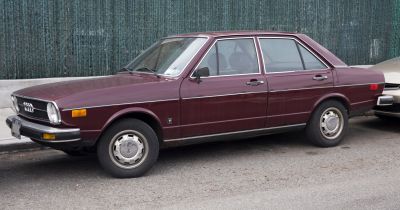
| Production: | 1973-1979 |
|---|---|
| Model Year: | 1973 |
| Length: | 4369 mm172.0 in |
| Width: | 1643 mm64.7 in |
| Height: | 1361 mm53.6 in |
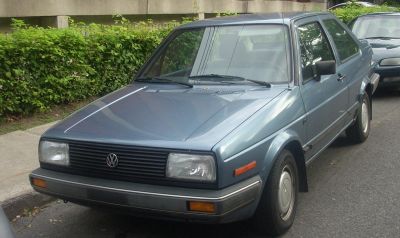
| Production: | 1983-1987 |
|---|---|
| Model Year: | 1984 |
| Length: | 4385 mm172.6 in |
| Width: | 1675 mm65.9 in |
| Height: | 1415 mm55.7 in |
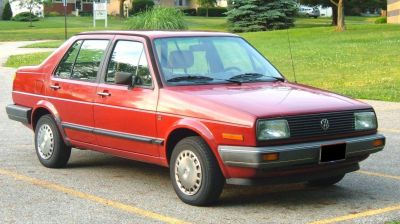
| Production: | 1983-1987 |
|---|---|
| Model Year: | 1984 |
| Length: | 4385 mm172.6 in |
| Width: | 1675 mm65.9 in |
| Height: | 1415 mm55.7 in |
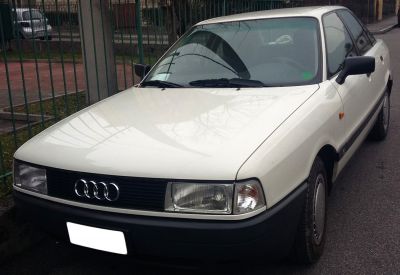
| Production: | 1986-1991 |
|---|---|
| Model Year: | 1986 |
| Length: | 4393 mm173.0 in |
| Width: | 1695 mm66.7 in |
| Height: | 1397 mm55.0 in |
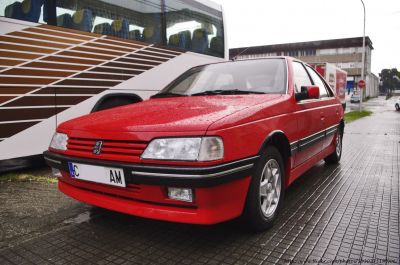
| Production: | 1987-1994 |
|---|---|
| Model Year: | 1987 |
| Length: | 4408 mm173.5 in |
| Width: | 1714 mm67.5 in |
| Height: | 1406 mm55.4 in |
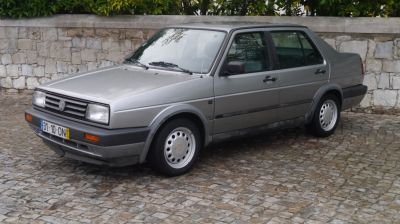
| Production: | 1987-1991 |
|---|---|
| Model Year: | 1988 |
| Length: | 4385 mm172.6 in |
| Width: | 1675 mm65.9 in |
| Height: | 1415 mm55.7 in |
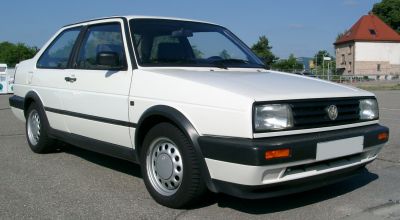
| Production: | 1987-1991 |
|---|---|
| Model Year: | 1988 |
| Length: | 4385 mm172.6 in |
| Width: | 1675 mm65.9 in |
| Height: | 1415 mm55.7 in |
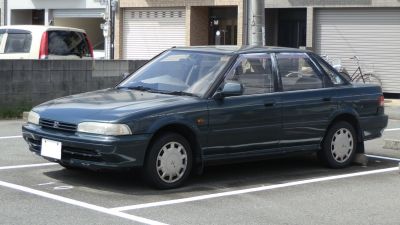
| Production: | 1989-1995 |
|---|---|
| Model Year: | 1989 |
| Length: | 4415 mm173.8 in |
| Width: | 1690 mm66.5 in |
| Height: | 1395 mm54.9 in |
